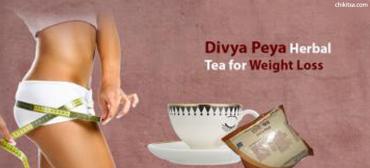4 Best Breathing Exercises For COVID-19

What Is COVID-19?
COVID-19 is a serious illness caused by a coronavirus that affects the lower respiratory tract and the upper respiratory tract of the respiratory system. This spreads from one person to another very fast, some types of coronavirus found in animals have not yet infected humans.
Some common signs of coronavirus are;
- Fever
- Cough
- Breathing issues
- Severe symptoms include pneumonia
- Acute respiratory syndrome
- Kidney failure, and
- Even death.
The impact of the virus has changed everyone's life, making everyone adapt to work online - online schools, online activity classes for children, reduced purchasing food from outside, reduced pollution in the environment due to reduced vehicles running, reduced outside roaming, etc.
To protect from this virus, we should wash our hands regularly for every one hour or so, wear a mask when going out of home, keep 6 feet distance from person to person, eat healthy food, intake vitamin tablets to boost immunity in the body and practicing breathing exercises for COVID-19 also will protect us from the virus.
Breathing Exercise For COVID-19
Coronavirus attacks on lungs and respiratory system, some people will have breathing problems with fluctuating oxygen levels. When there is a scarcity of oxygen, instead of getting panicked about the situation we can do deep breathing exercises to boost lung function naturally. Breathing exercises for COVID-19 will strengthen the lungs and restore oxygen flow. Deep breathing exercises will improve our ability to breathe, clear out mucus, restore our saturation levels and get on with the infection better, will reduce anxiety levels for a patient, and help to recover fast. Clinical studies have observed that breathing exercises will help to reduce shortness of breathing and reduce complications.
Some of the best Breathing exercises for covid-19 are;
1. Diaphragmatic Breathing
This is a belly breathing exercise that helps to improve the functioning of the diaphragm and get air to the base of the lungs which facilitates a person to breathe easily.
How To Do
To do this breathing exercise we need to sit with crossed legs in a relaxed position and keep our hands on our legs. Inhale through the nose, your stomach and ribs expand outwards. Exhale, stretching stomach and ribs inwards. Similarly, repeat the exercise up to 10 times.
2. Pursed Lip Breathing
This is the best technique to increase oxygen intake and focus on your artery open.
How To Do
Try sitting in a relaxed position, slowly inhale through the nose several times, exhale with the mouth slowly. This exercise clears the air in the lungs.
3. Yawn To A Smile
This exercise will help to open muscles in the chest and regulate oxygen flow in the lungs.
How To Do
To perform this exercise, sit straight with crossed legs, stretch arms up to the shoulder levels. Intake air through the mouth and release air through the mouth.
4. Pranayama
Pranayama is one of the best breathing exercises to improve the functioning of the lungs and boost immunity. We have to do this exercise on an empty stomach.
How To Do
To do this breathing exercise, sit in a relaxed position with crossed legs, close your eyes, close your right nostril with the thumb, inhale with the left nostril, now remove your thumb on the right nostril and close the left nostril with the little finger and exhale the air through the right nostril. Repeat this 10 times to improve lung capacity.
Benefits Of Breathing Exercises
The benefits that accompany breathing exercises for COVID-19 are a lot. Whereas, following are the few prime benefits of breathing exercises;
- It strengthens the lungs to restore oxygen flow.
- It clears mucus in the nose and gets on with the infection.
- It restores the saturation levels.
- It helps to relieve stress and anxiety levels.
- It gives temporary relief and boosts oxygen levels in the lungs.
- It may not fight the virus directly but it helps to recover fast from the virus.
Although these are suggested for and done by the patients who are home isolated an uninfected person too can practice these breathing exercises which are very good for the respiratory system.
Precautions To Be Followed
It is important to note that these exercises are best suited for COVID-19 patients who are suffering from mild or moderate symptoms. These exercises help to boost lung function. They should not engage with high-intensity movements at the beginning itself. First, we need to observe their symptoms and how they are feeling. We can consult a doctor before doing these breathing exercises for COVID-19.









